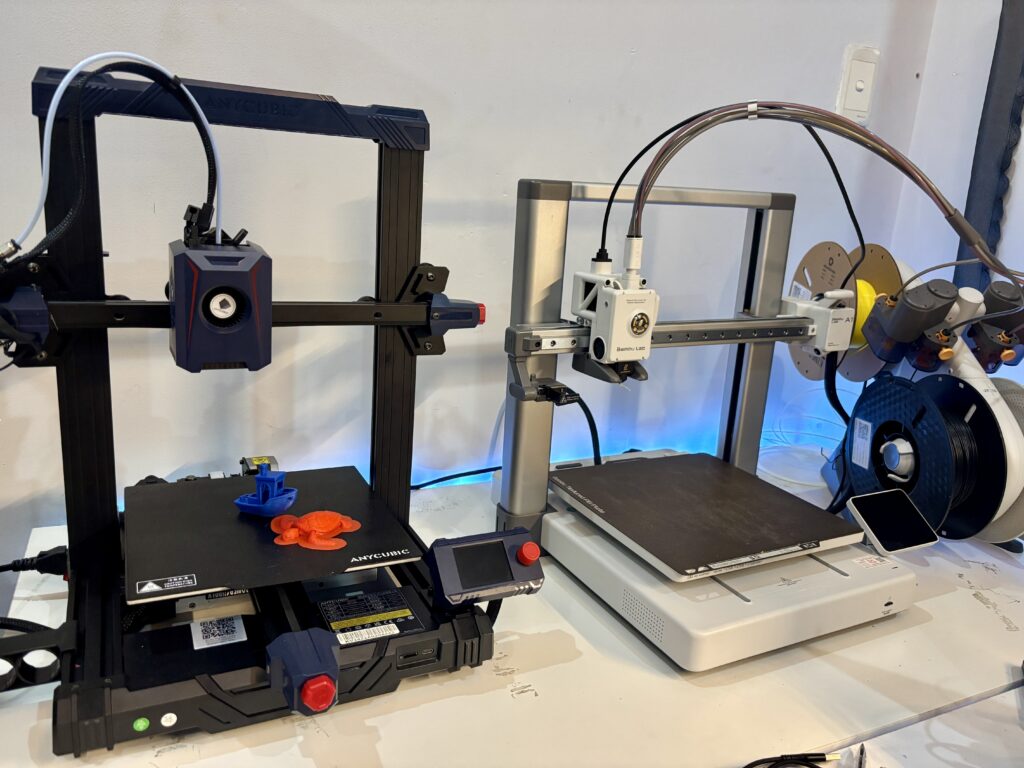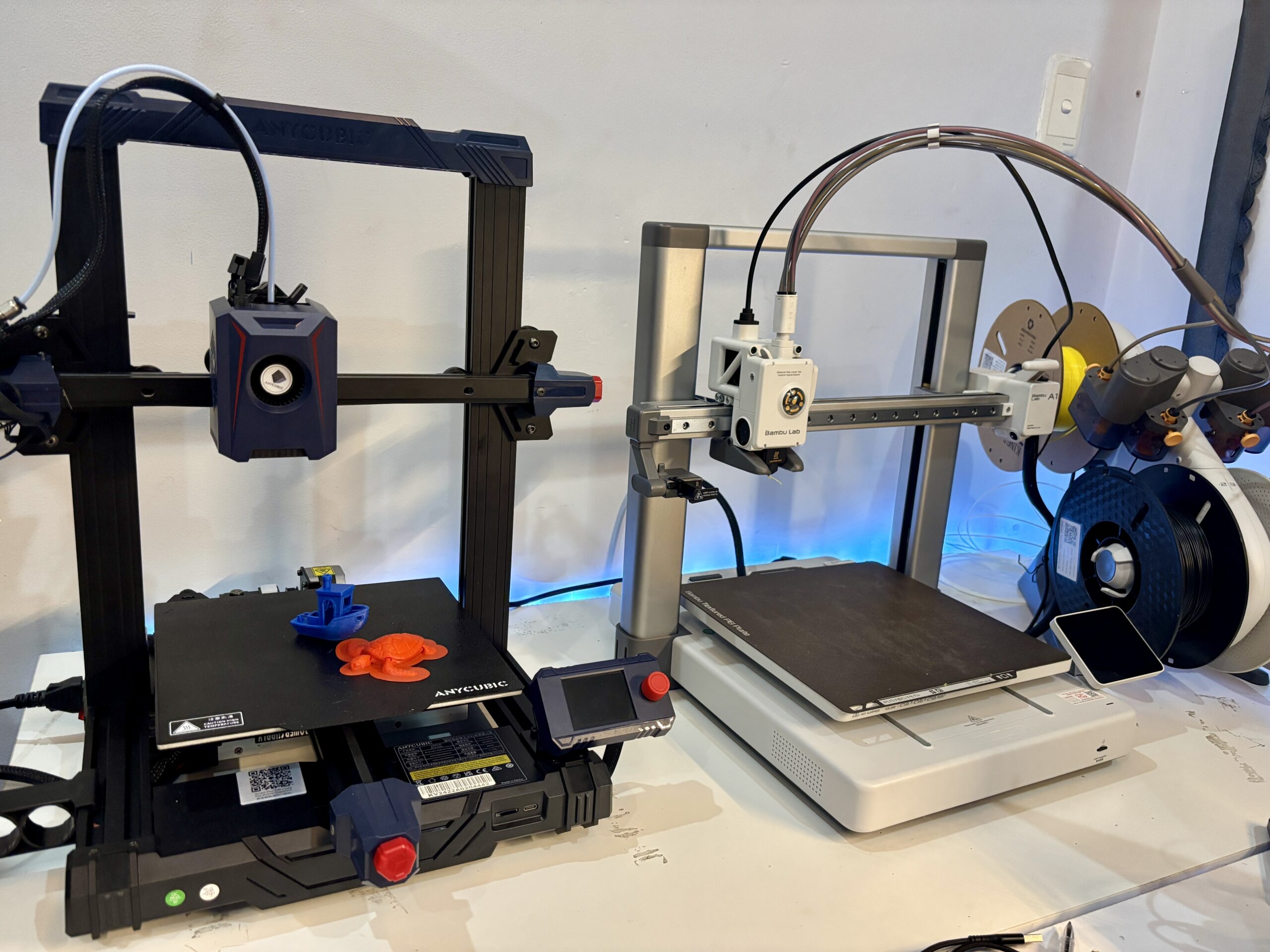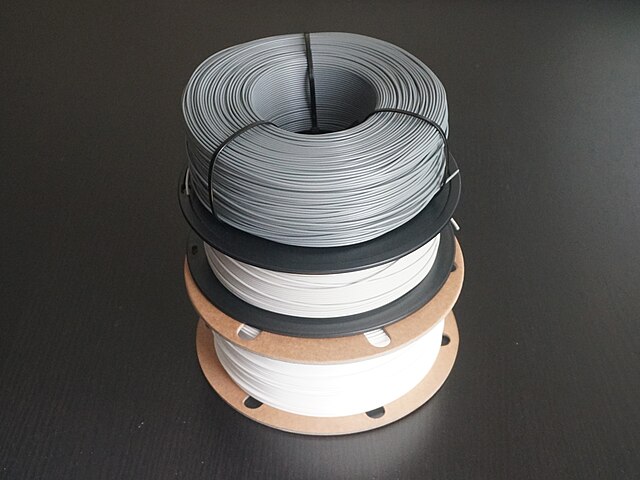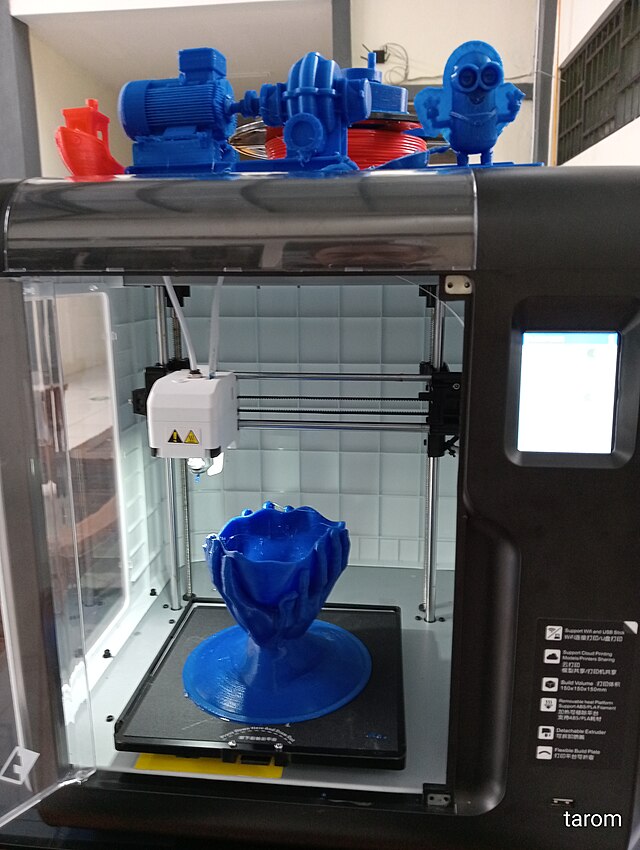If you’re getting into FDM 3D printing, or even if you’ve been around the block and are looking for your next machine, chances are you’ve come across two names: the Anycubic Kobra 2 Neo and the Bambu Lab A1.

I’ve spent the past few weeks printing, tweaking, and testing both of these printers—side by side—and let me tell you: they’re very different beasts. Both good in their own way, but not for the same kind of user. This isn’t just a spec-sheet battle. It’s a story of what it feels like to actually use them.
Getting Started: One Welcomes You, the Other Wows You
When I first unboxed the Kobra 2 Neo, I felt like I was setting up a well-thought-out kit for beginners. Assembly was minimal, the wiring was labeled, and the whole process took maybe 25–30 minutes. The LeviQ 2.0 auto bed leveling kicked in, and within no time, I was watching my first Benchy come to life. It was simple, fast, and, most importantly, not intimidating.
Now contrast that with the Bambu Lab A1, and the vibe is completely different. From the moment you turn it on, it feels like a premium device. The touchscreen guides you through setup with almost no effort. Everything from bed leveling to vibration compensation is automated. You don’t set up the A1—it sets itself up. It was the first time I felt like the printer was working for me, not the other way around.
Daily Use: Speed vs Simplicity
Speed is where the A1 really flexes. With a max print speed of 500 mm/s and smart features like pressure advance and vibration compensation, this thing flies—and still maintains excellent detail. I printed models with tiny text, clean bridges, and tight tolerances without even dialing in crazy settings. It’s the kind of printer that makes you want to print more just because it’s that effortless.
But the Kobra 2 Neo held its ground surprisingly well. It’s rated at 250 mm/s, and while you probably won’t run it at full speed all the time, it consistently produced solid results in PLA and PETG. TPU is doable too, with a bit of patience. For its price point, the quality is honestly impressive. You just have to be okay with spending a little more time tweaking your slicer settings.
Where the Kobra 2 Neo feels like a machine you grow with, the Bambu A1 feels like a machine that grows with you. That distinction became more and more clear with each project.
Material Flexibility and Workflow
With the Neo, you’re mostly looking at standard filaments—PLA, PETG, TPU, and maybe ABS if you’ve got good airflow. The 260°C nozzle handles most day-to-day needs but limits you on more advanced stuff like Nylon or polycarbonate. And since it’s an open-frame design, heat-sensitive filaments might struggle in less-than-perfect conditions.
The A1 opens up that next level. With a 300°C hotend and more stable motion system, it prints not just the basics, but also engineering-grade materials—Nylon, PC, ASA, carbon fiber blends (with the right nozzle), and even dissolvable support filaments. It’s still open-frame, so a custom enclosure helps for tricky filaments, but out of the box, it’s far more capable.
Interfaces and Ecosystems
This is one of those areas that feels less like a “nice-to-have” and more like a daily quality-of-life upgrade.
The Kobra 2 Neo has a basic LCD screen with a knob. It works, but it feels like tech from five years ago. Changing settings or selecting files off an SD card is fine… until you’ve used something better.
The A1? Full-color touchscreen, Wi-Fi connectivity, cloud printing, remote monitoring. The integration with Bambu Studio is seamless—you slice, click, and it shows up on the printer, ready to go. Firmware updates, print queues, and even diagnostics feel like part of a unified experience. Honestly, it spoils you.
Sound, Build, and Maintenance
I work in a shared space, so noise matters. The Kobra 2 Neo is noticeably louder. The stepper motors, fans, and motion all hum at a level that’s fine for a garage but might be distracting in a home office. Meanwhile, the A1 is whisper-quiet in comparison. That’s thanks to better stepper drivers, smoother mechanics, and smarter cooling.
In terms of reliability and repairs, the Neo shines because it’s dead simple. Parts are cheap, widely available, and easy to swap. Firmware updates are manual but straightforward. It’s like a Honda Civic—you can always find a tutorial to fix whatever’s wrong.
The A1 is more complex. But it’s also smarter. It tells you when something’s off, has modular components for quick replacement, and rarely needs fiddling. It’s a bit more of a closed ecosystem, but honestly, that’s not a bad thing unless you’re a hardcore modder.
So… Which One Should You Choose?
Honestly, they’re not really competing in the same space. It’s like comparing a solid Toyota to a tech-heavy Tesla. Both are good—just depends what you’re looking for.
If you’re new to 3D printing, or want something reliable and affordable to get started with, the Kobra 2 Neo is an awesome choice. It does exactly what it promises, and you can learn a lot without breaking the bank. It’s also a great second printer for running simple jobs.
But if you want speed, precision, quieter prints, and the convenience of a modern, connected ecosystem, the Bambu Lab A1 is absolutely worth the investment. It feels like a printer designed not just to keep up with you—but to push you forward.
Quick Comparison
| Feature | Kobra 2 Neo | Bambu Lab A1 |
|---|---|---|
| Max Speed | 250 mm/s | 500 mm/s |
| Bed Leveling | LeviQ 2.0 (Auto) | Fully Automated |
| Nozzle Temp | 260°C | 300°C |
| Display | 2.4″ Knob LCD | Full-Color Touchscreen |
| Connectivity | SD Card | Wi-Fi + Cloud |
| Noise Level | Moderate–High | Quiet |
| Material Support | PLA, PETG, TPU | PLA, PETG, TPU, PC, Nylon, ASA, PVA |
| Price | ~$200 | ~$459 |
Where to Get Them (and a Few Great Alternatives)
- Get the Anycubic Kobra 2 Neo on Amazon
Solid entry-level choice with auto bed leveling and great speed for the price. - Check out the Bambu Lab A1 here
For those who want blazing speed, high precision, and premium features.
Looking for Alternatives?
- Creality Ender 3 V3 SE
A strong alternative to the Kobra 2 Neo. Slightly slower, but open-source friendly and easy to mod. - Elegoo Neptune 4 Pro
Fast, affordable, and great for beginners who want something a bit more refined than older Ender models. - Prusa MK4 3D Printer
For those who prefer open-source reliability and unmatched community support.
All links may include affiliate tracking. If you make a purchase, I might earn a small commission (at no extra cost to you)—thanks for supporting the content!
Whichever one you go with, you’re entering a super fun space. Just remember—3D printing isn’t about perfection. It’s about iteration, learning, and creating. And both of these printers will take you far down that road.
If you’ve got questions or want help getting started, drop a comment or shoot me a message. Always happy to help a fellow maker out.




